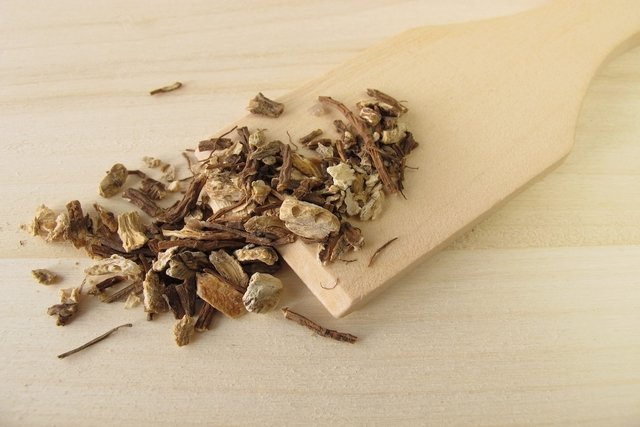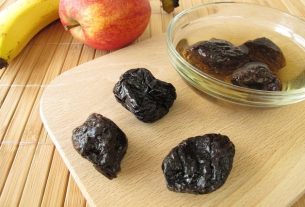Angelica is a medicinal plant of the species Angelica archangelicaindicated to assist in the treatment of intestinal problems, such as excess gas and poor digestion, for example, as it is rich in volatile oils, such as β-pinene, α-phellandrene and limonene, as well as coumarins, such as angelicin and scopoletin, with properties anti-inflammatory, digestive and gastric protective.
The normally used part of this medicinal plant, which is also known as arcangelica, yerba-de-esspirito-santo and hyacinth-of-India, is the root, from which the active substances are extracted to prepare tea or essential oil.
Angelica can be found in health food stores, herbalists or compounding pharmacies, and should be used with the advice of a doctor or other health professional with experience in medicinal plants.

What is it for
Angelica has anti-inflammatory, antioxidant, digestive, gastric protective, diuretic, expectorant, stimulant, anxiolytic, diaphoretic and tonic properties, and is normally indicated for:
- Abdominal discomfort;
- Indigestion;
- Asia;
- Excess gases;
- Nervousness;
- Anxiety;
- Lack of appetite;
- Poor circulation;
- Buerger’s disease;
- Headache or migraine;
- Insomnia;
- Urinary infection;
- Cough;
- Chronic bronchitis;
- Common cold;
- Fever;
- Rheumatoid arthritis.
Furthermore, some studies carried out in the laboratory (1,2), using breast cancer cells, showed that angelica root and leaves can have an antitumor effect. However, studies in humans are still needed to prove this benefit.
Angelica essential oil can also be used on the skin to help treat psoriasis, ringworm, herpes simplex or bruises, due to its anti-inflammatory, antifungal and antiviral action.
Although it has many benefits, angelica should not replace medical treatment or be used without guidance from a doctor or healthcare professional with experience in medicinal plants.
How to make tea
Angelica tea can be used for gastrointestinal problems, such as poor digestion, heartburn, excess gas or even loss of appetite, for example.
Ingredients
- 20 g of dried angelica root;
- 800 mL of water.
Preparation mode
Boil the water, turn off the heat, add the dried angelica root and let it rest for about 10 minutes. Then strain, wait for it to cool and drink up to 3 cups a day, 30 minutes before a meal.
This tea can also be used in the form of compresses applied to the skin in the case of rheumatoid arthritis or bruises, for example.
Other uses
Angelica can also be used in the form of an essential oil for inhalation or aromatherapy.
1. Aromatherapy with angelica
Aromatherapy with angelica essential oil can help alleviate symptoms of anxiety, nervousness or insomnia, as it has anxiolytic properties.
Ingredients
- 6 to 15 drops of angelica root essential oil.
Preparation mode
Place drops of angelica essential oil in a little water, inside an electric air freshener or in a room diffuser. The amount of water used varies according to the capacity of the electric air freshener or diffuser. The cloud of smoke or vapor formed allows the aroma to be released throughout the room.
Another way to perform aromatherapy with angelica essential oil is to deeply inhale the aroma of the essential oil directly from the bottle, holding the air in your lungs for about 2 to 3 seconds, before exhaling. See other ways to do aromatherapy.
2. Inhalation with angelica vapor
Inhaling angelica vapor is a good home remedy for respiratory problems, such as coughs, chronic bronchitis or the common cold, as it quickly relieves nasal congestion.
Ingredients
- 3 to 6 drops of angelica root essential oil;
- 1 liter of boiling water.
Preparation mode
Add drops of angelica essential oil to boiling water. Then, cover your head with an open towel, so that it also covers the container containing the angelica essential oil solution. Tilt your head over the container and inhale the steam as deeply as possible for up to 10 minutes, repeating 2 to 3 times a day. This towel helps keep the solution vapor for longer.
It is important to be careful not to get your head too close to the water to avoid causing burns from the water vapor.
When you finish inhaling, it is important to wipe your face with a towel soaked in cold water.
Possible side effects
The side effects of angelica are usually associated with the fact that it is used in large quantities, as in addition to being toxic, it can cause increased sugar levels in the urine and gastrointestinal irritation.
Furthermore, the use of angelica on the skin, especially in the form of essential oil, can result in hypersensitivity reactions and if the person is exposed to sunlight for a long time, it can leave the area stained. Therefore, if angelica is used on the skin, it is important to apply sunscreen immediately afterwards to avoid blemishes.
Who shouldn’t use
Angelica should not be used by pregnant women as the plant can promote the occurrence of uterine contractions, which can lead to miscarriage. In the case of breastfeeding women, the use of angelica is not recommended, as there are not enough studies to define whether its use is safe or not at this stage.
The use of angelica is also not recommended for diabetics and those with gastric ulcers, unless indicated by a doctor or herbalist, and use should be done as directed.

Sign up for our newsletter and stay up to date with exclusive news
that can transform your routine!
Warning: Undefined array key "title" in /home/storelat/public_html/wp-content/plugins/link-whisper-premium/templates/frontend/related-posts.php on line 12
Warning: Undefined array key "title_tag" in /home/storelat/public_html/wp-content/plugins/link-whisper-premium/templates/frontend/related-posts.php on line 13



